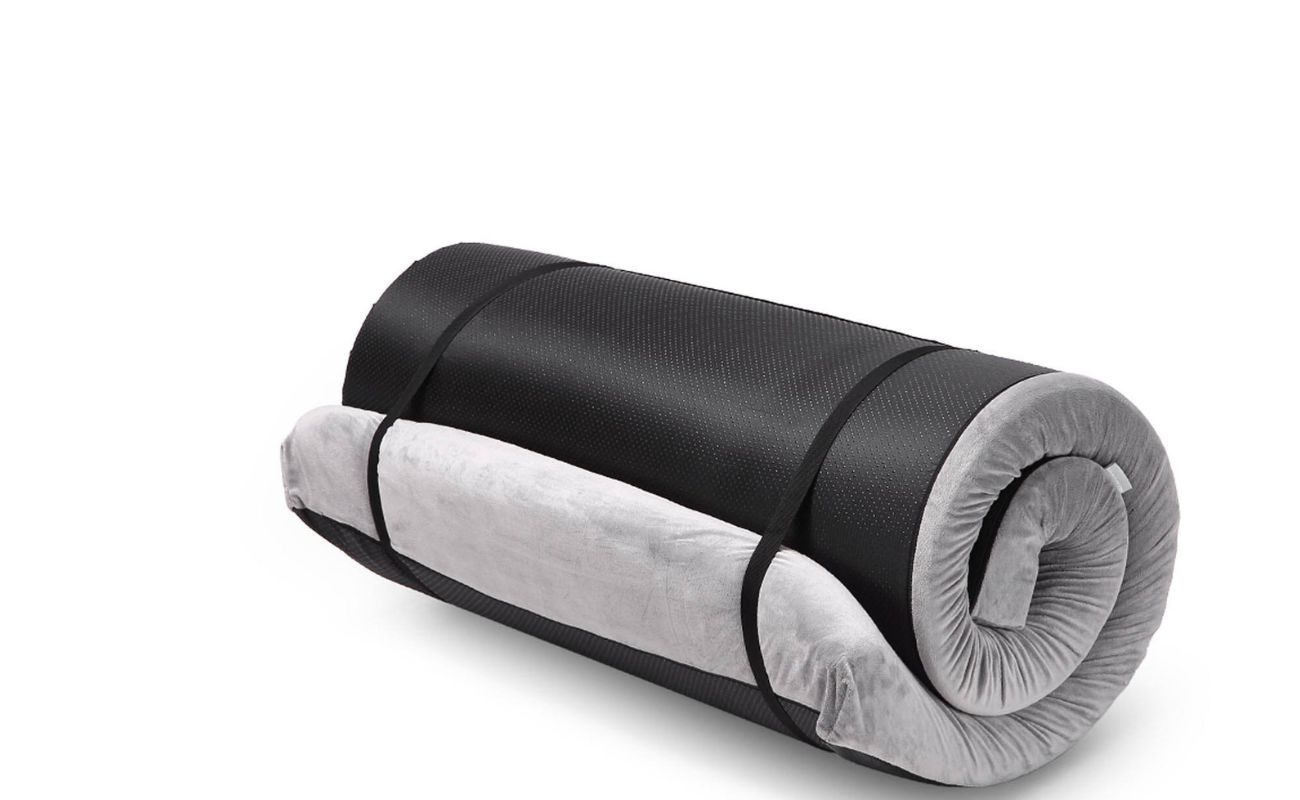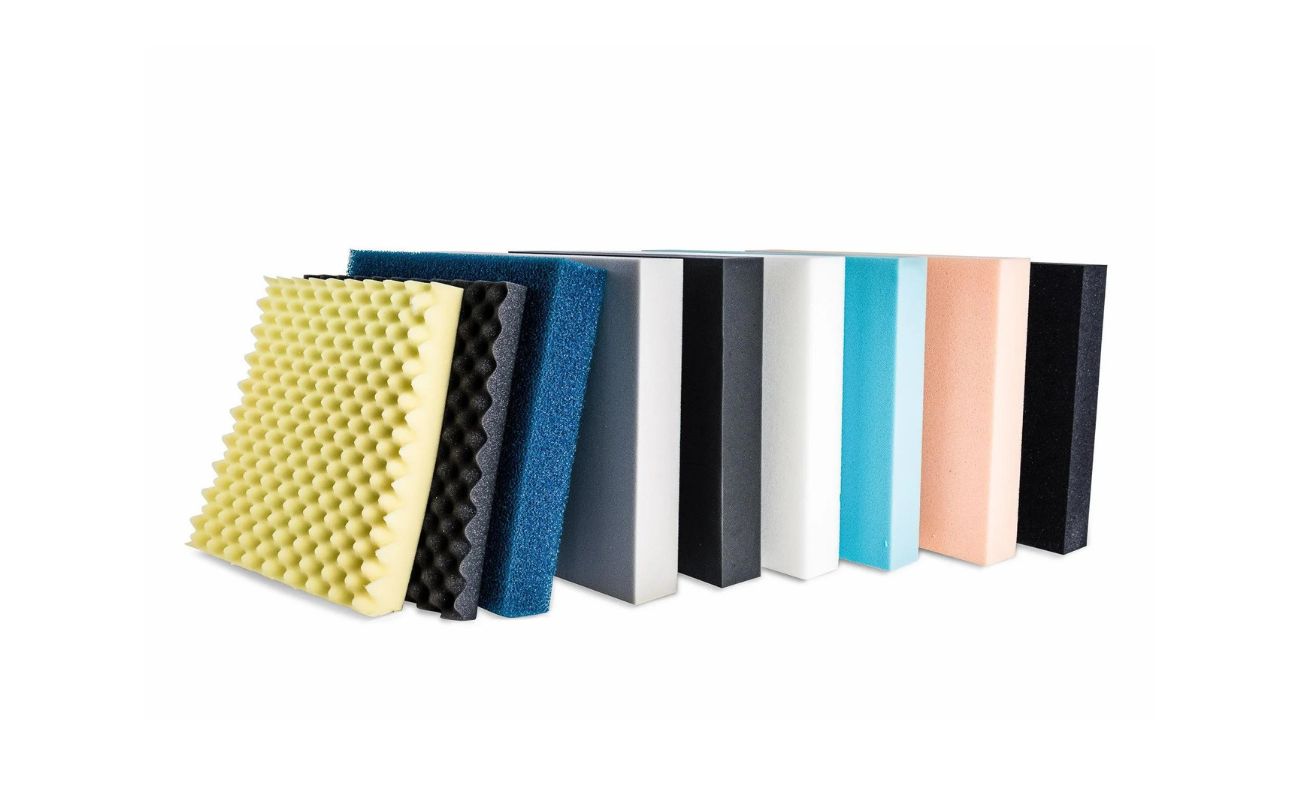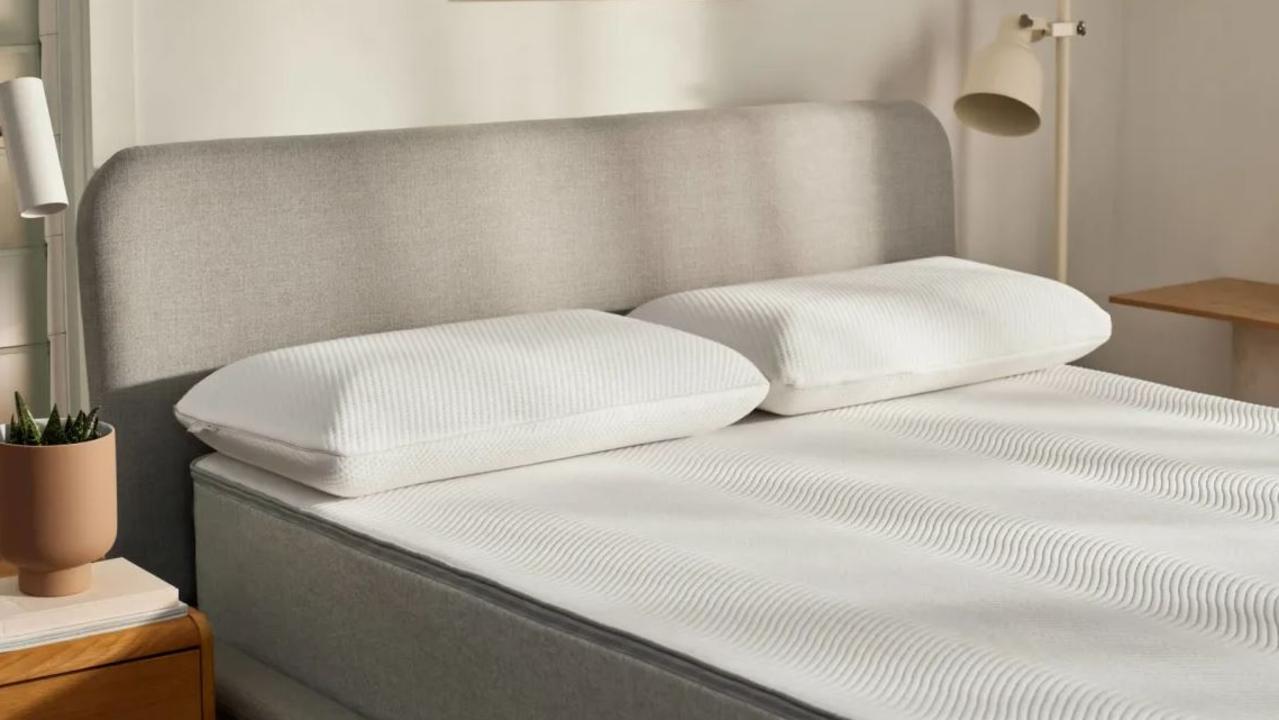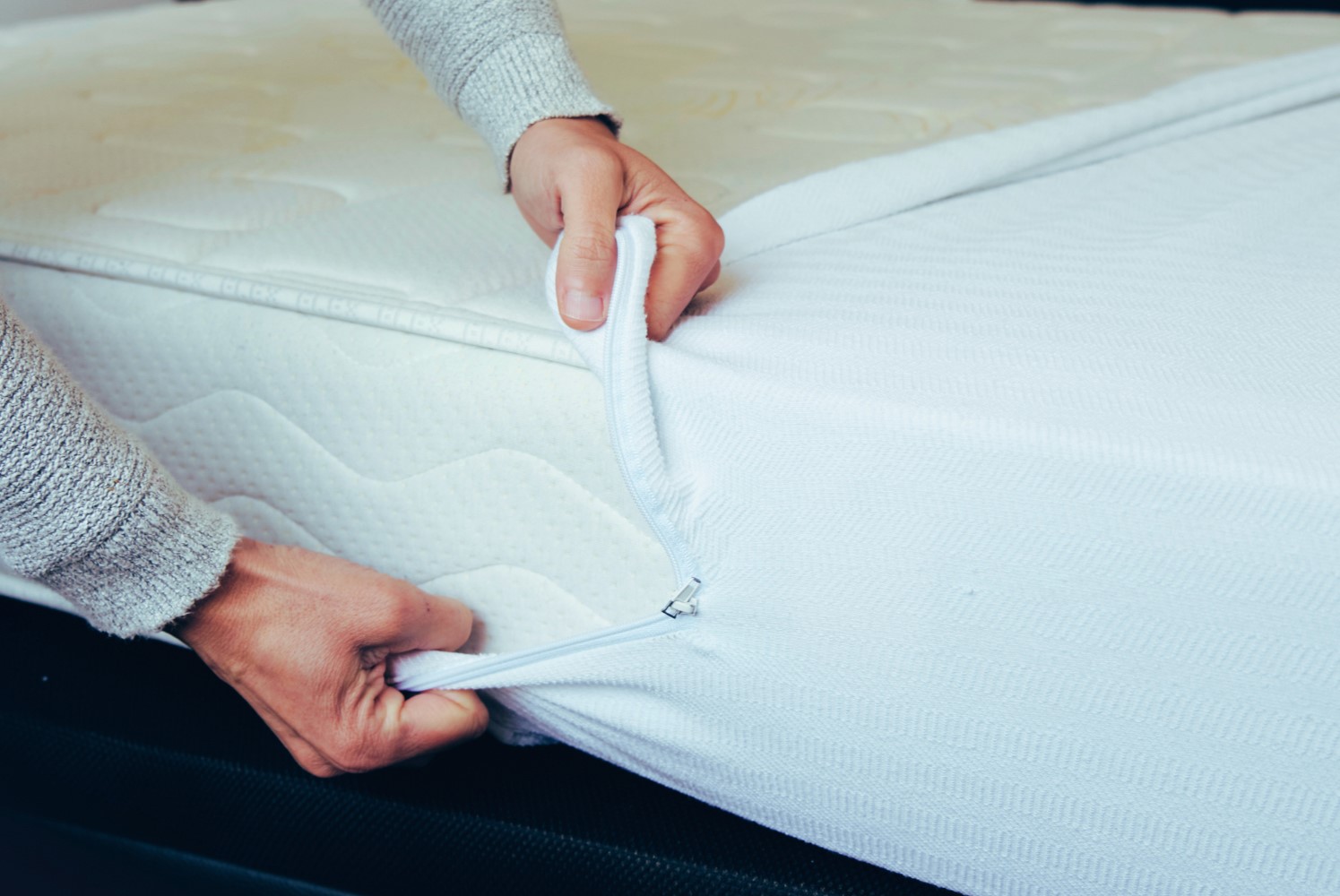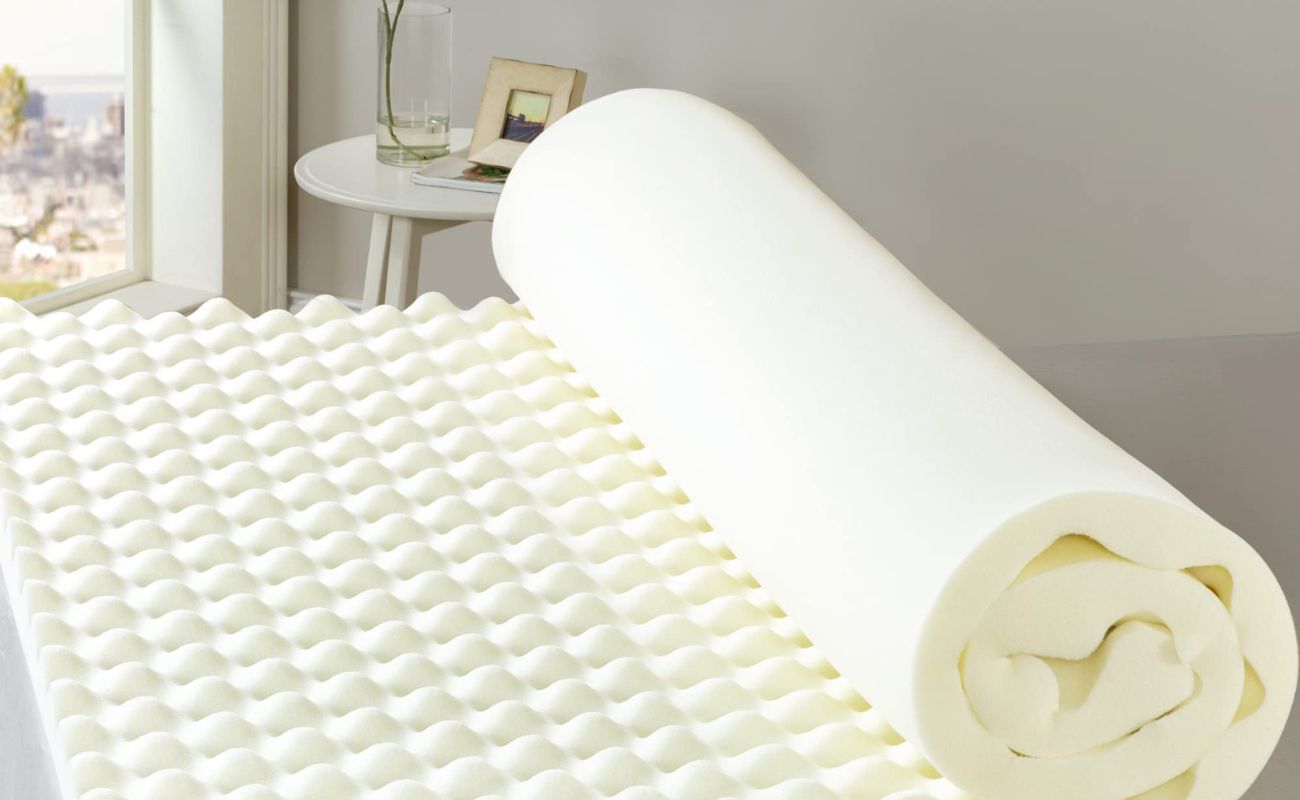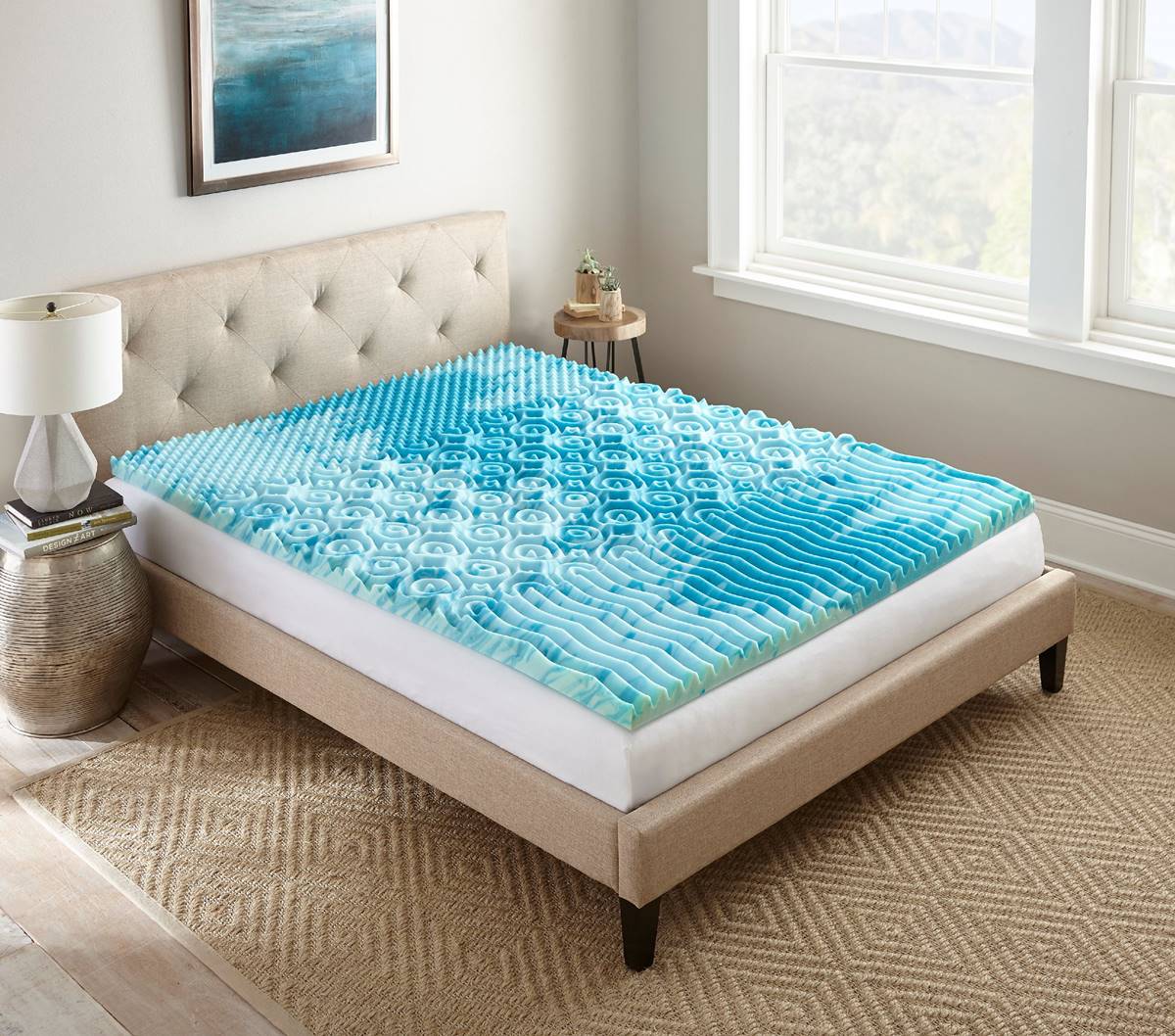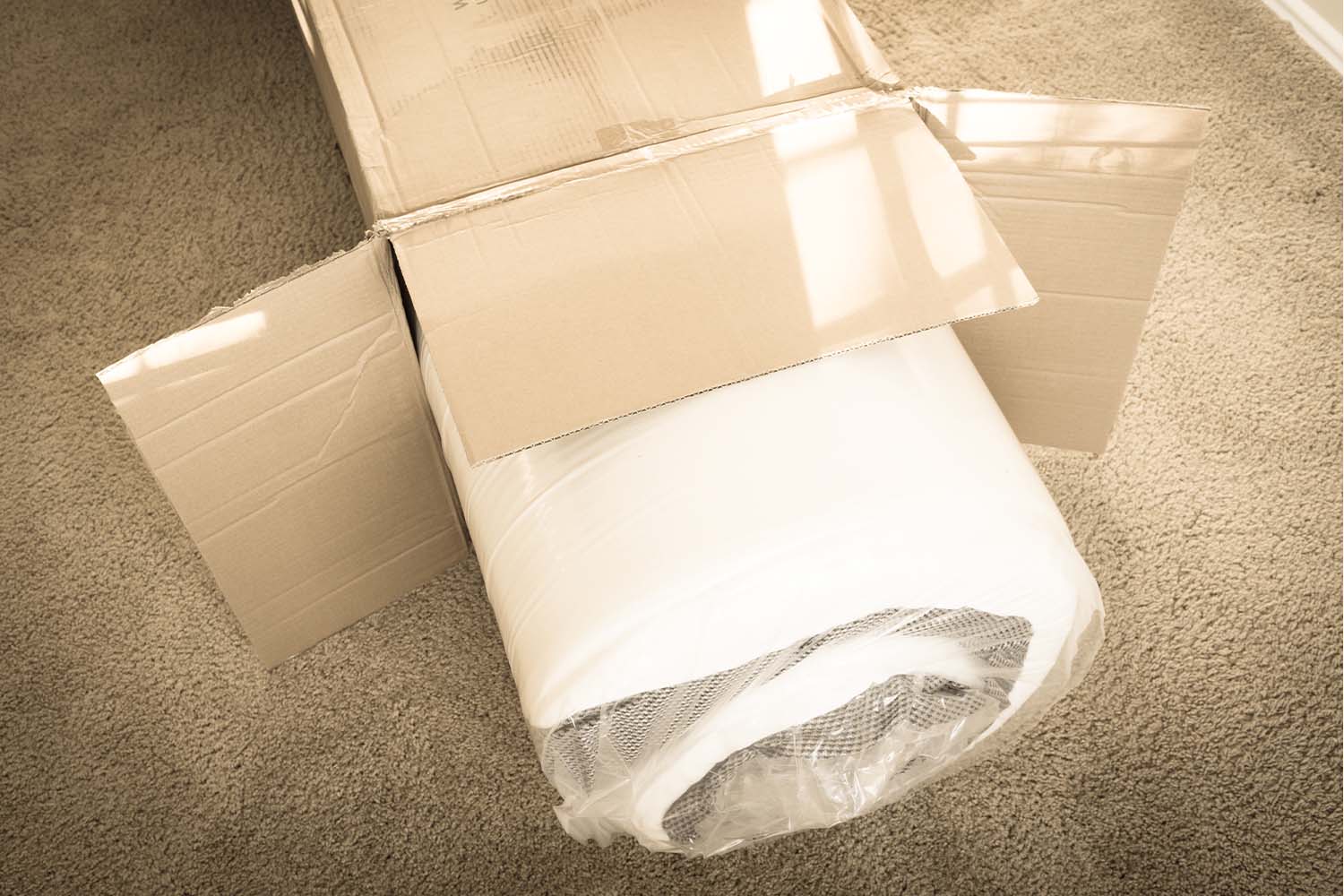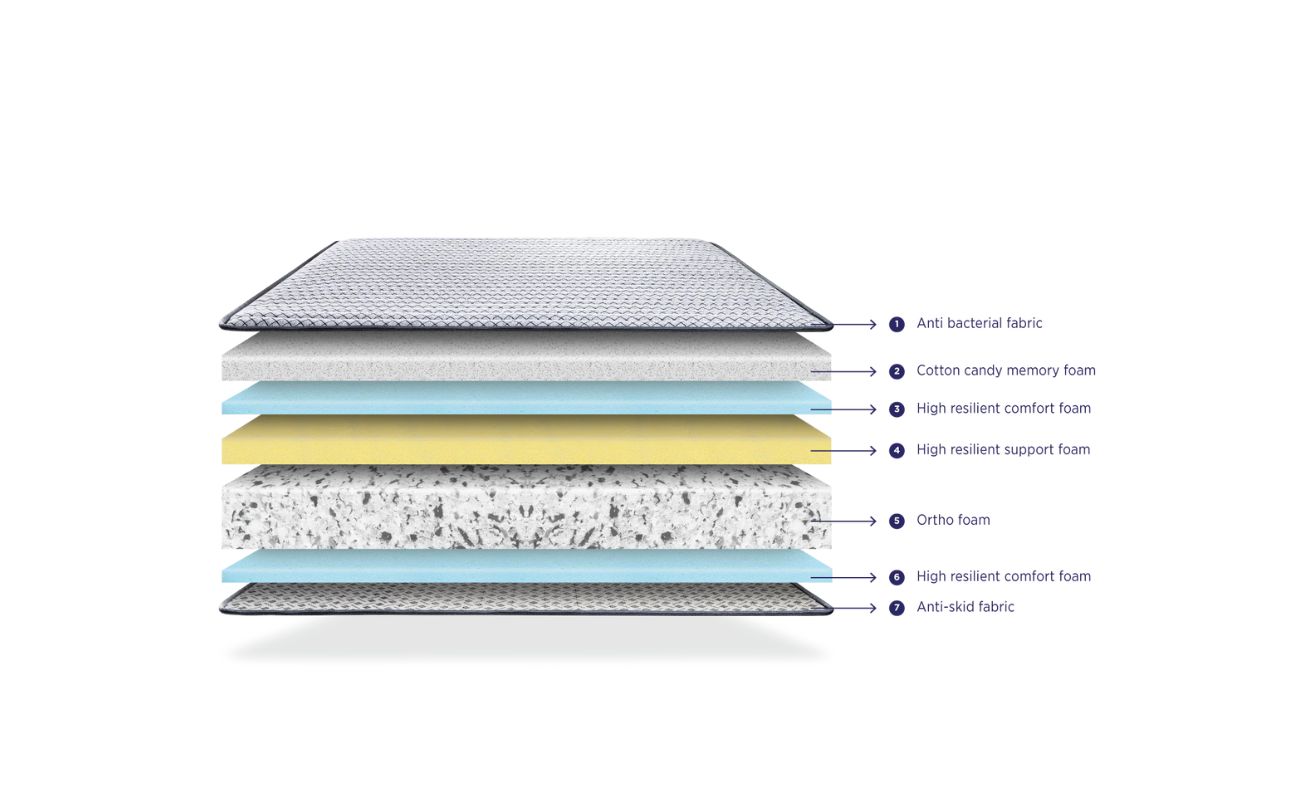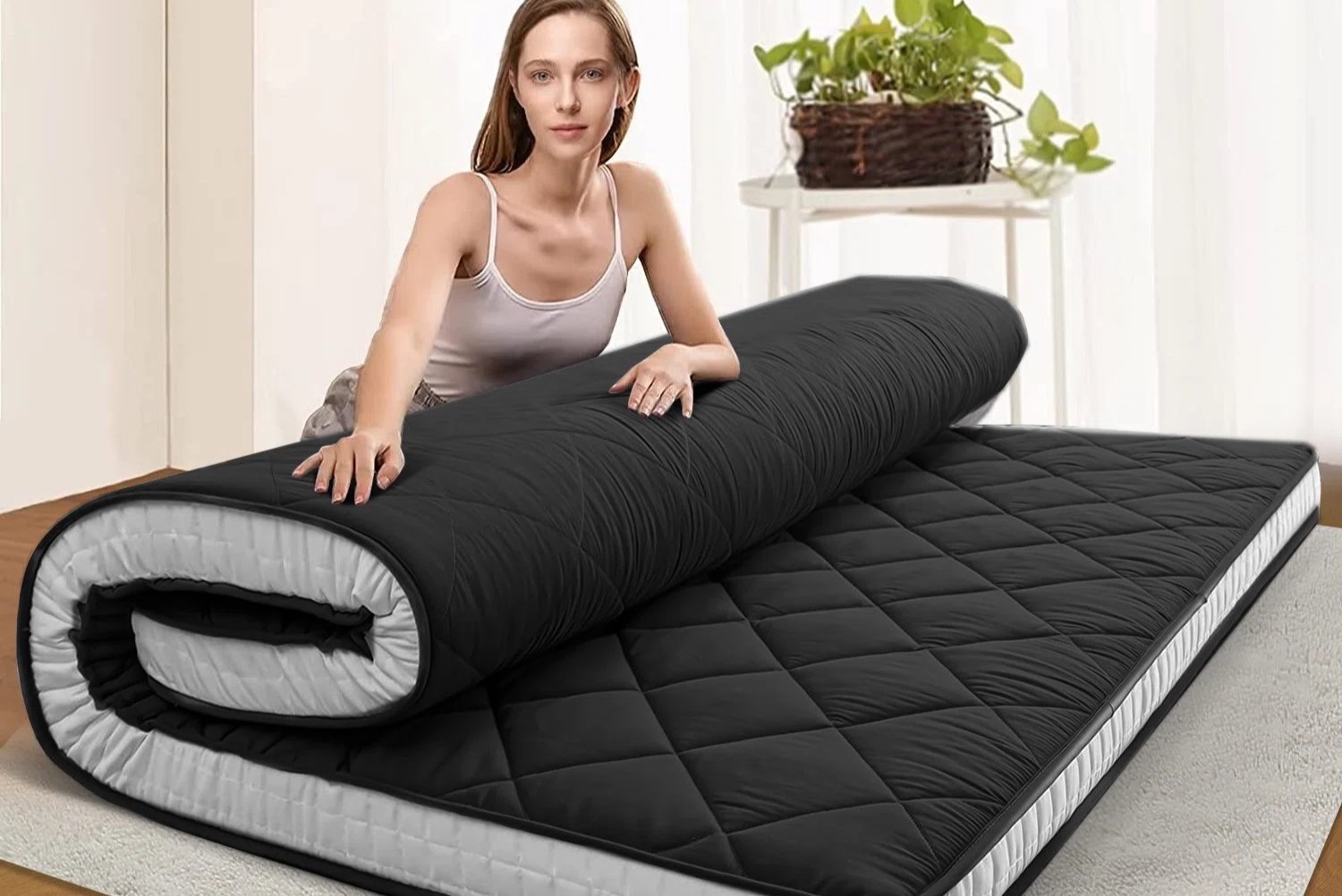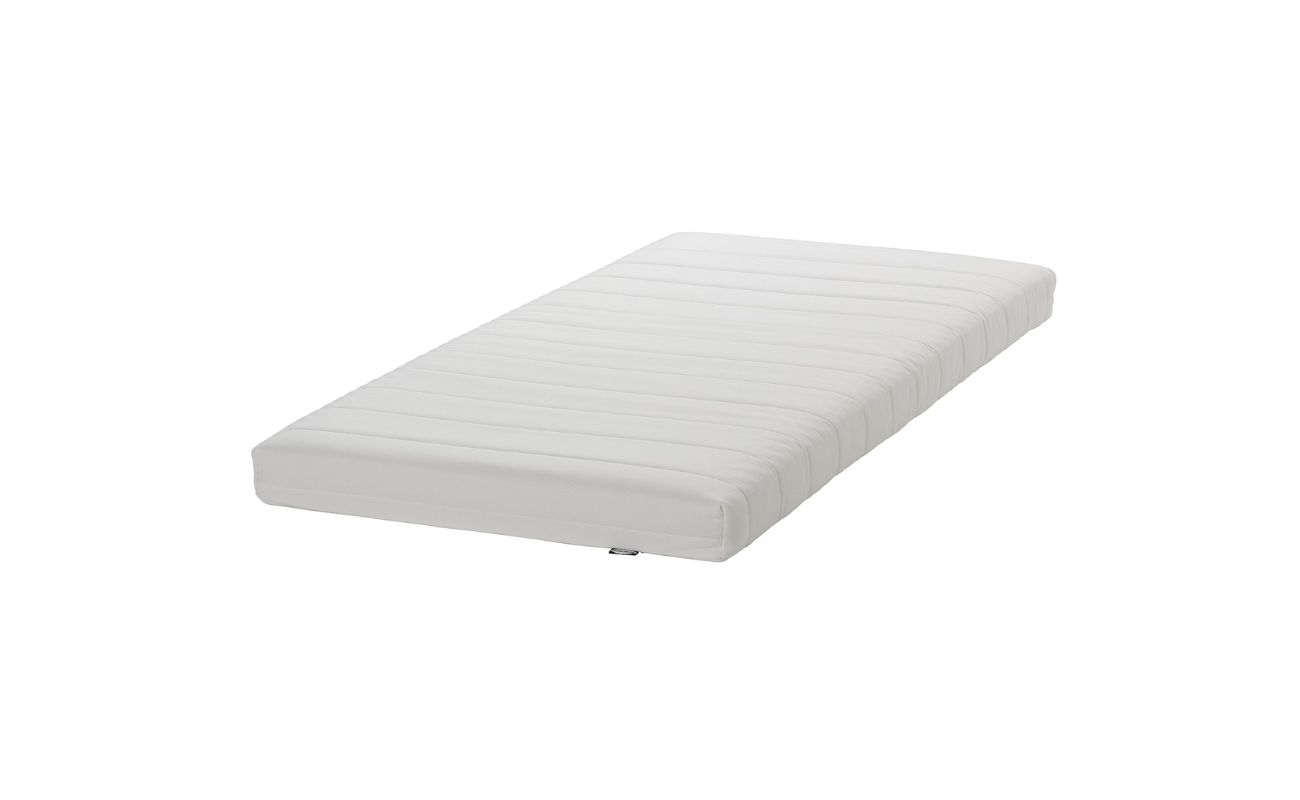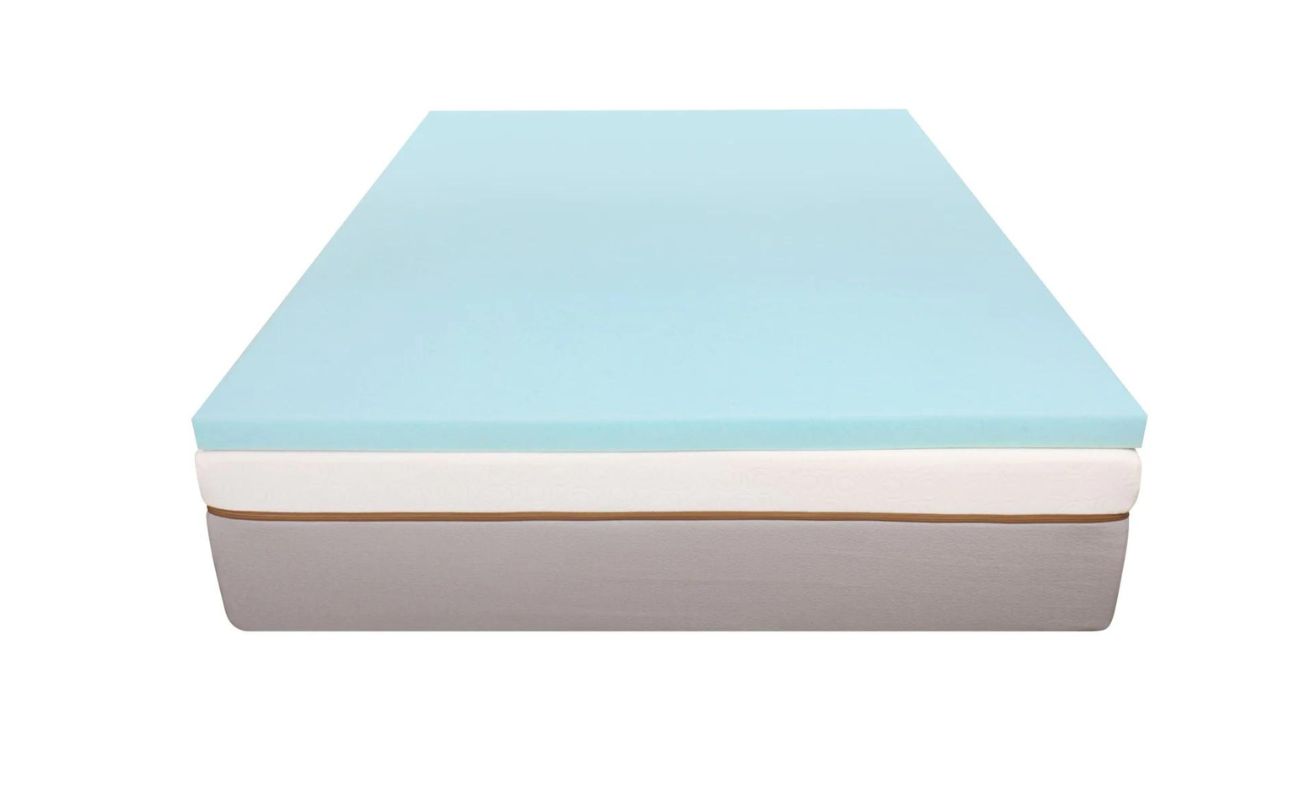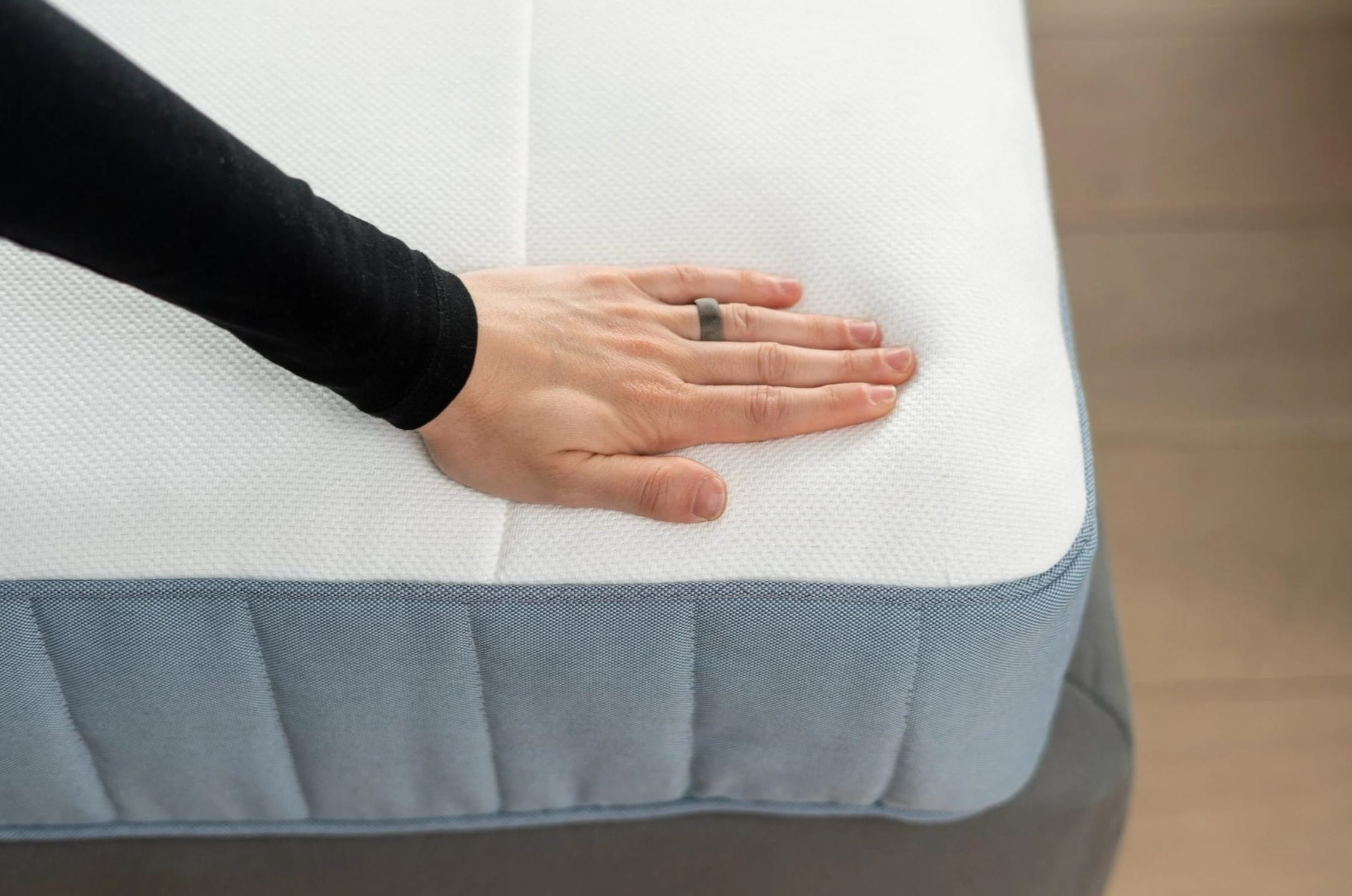Home>Furniture>Bedroom Furniture>How To Cool Foam Mattress
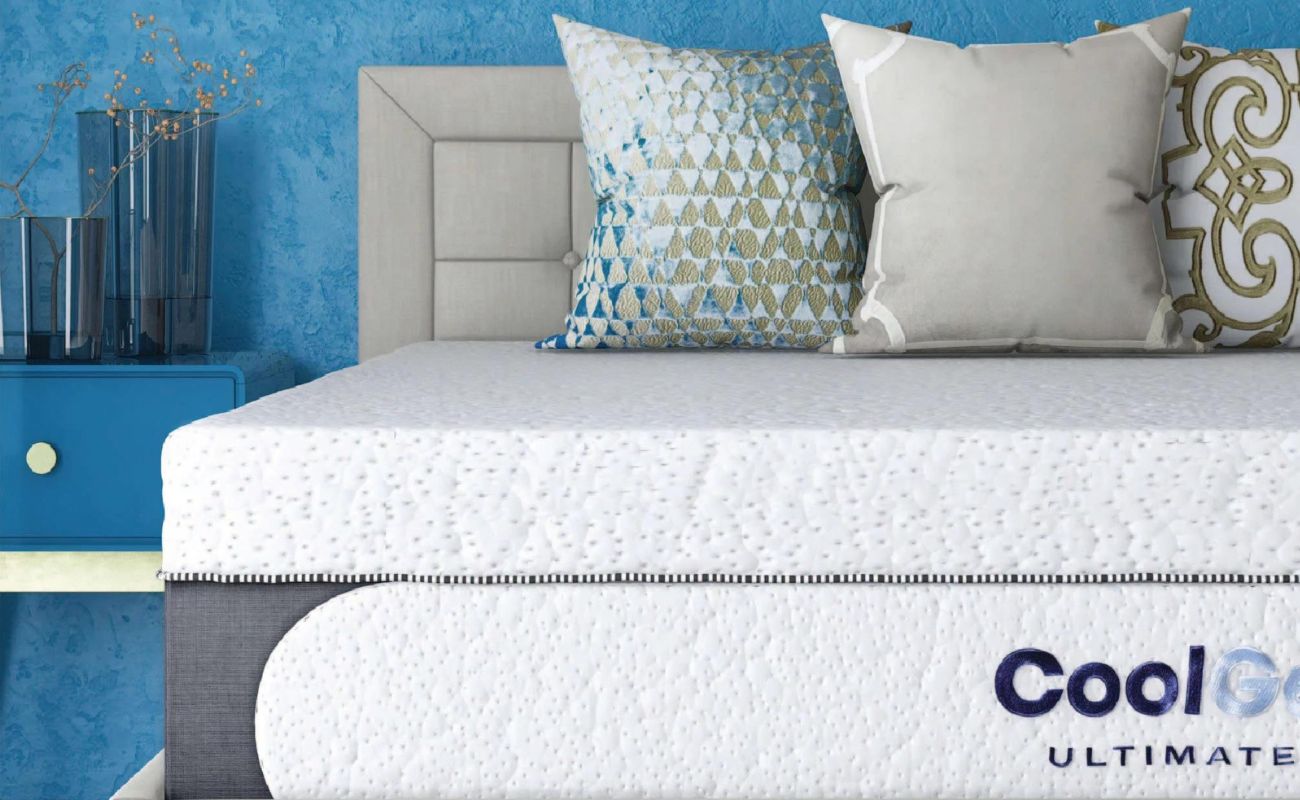

Bedroom Furniture
How To Cool Foam Mattress
Modified: February 17, 2024
Learn how to cool your foam mattress for a comfortable sleep. Find expert tips and techniques to beat the heat in your bedroom. Enhance your bedroom furniture with effective cooling solutions.
(Many of the links in this article redirect to a specific reviewed product. Your purchase of these products through affiliate links helps to generate commission for Storables.com, at no extra cost. Learn more)
Introduction
When it comes to getting a good night’s sleep, the temperature of your bed can play a crucial role. As the popularity of foam mattresses continues to rise, so does the concern over their tendency to retain heat. If you find yourself waking up drenched in sweat or struggling to find relief from the heat, it’s time to explore methods for cooling your foam mattress.
In this article, we will delve into the world of foam mattresses and discuss the factors that contribute to their temperature retention. We will also provide you with valuable tips on how to cool your foam mattress for a more comfortable and restful sleep experience. Whether you are a hot sleeper or reside in a warm climate, these techniques will help you maintain a cooler and more enjoyable sleep environment.
Key Takeaways:
- Keep your foam mattress cool by investing in a cooling mattress topper and using breathable bedding materials like cotton and linen. Proper airflow and room temperature control are essential for a comfortable sleep environment.
- Understanding the factors that contribute to heat retention in foam mattresses can guide you in choosing the right mattress and implementing effective cooling strategies. Consider foam density, firmness level, and top layer construction for a cooler sleep experience.
Read more: How To Store A Foam Mattress
Understanding Foam Mattresses
Foam mattresses have gained popularity due to their ability to contour to the body and alleviate pressure points. But one common downside to foam mattresses, especially those made of memory foam, is their tendency to retain heat. Understanding the composition of foam mattresses will help you better grasp why they can become so warm.
Memory foam mattresses are made from a viscoelastic material that reacts to body heat and pressure, allowing it to conform to your body shape. This material has a dense structure that can trap heat and hinder proper airflow. As a result, body heat becomes trapped in the mattress, causing it to feel warm and uncomfortable.
In recent years, manufacturers have made advancements in foam technology to address the issue of temperature regulation. Some foam mattresses now feature gel-infused foam, enhanced airflow through open-cell construction, or even cooling cover fabrics. These innovations aim to dissipate heat and help maintain a cooler surface temperature for a more comfortable sleep experience.
It is important to note that not all foam mattresses will retain heat to the same extent. The degree of heat retention can vary depending on the specific type and quality of foam used in the mattress construction. Therefore, it is crucial to consider factors such as foam density, firmness level, and additional cooling features when choosing a foam mattress.
Now that we have a better understanding of foam mattresses and why they can become warm, let’s explore the factors that contribute to their temperature retention.
Factors Affecting Foam Mattress Temperature
Several factors contribute to the temperature retention of foam mattresses. By understanding these factors, you can make informed choices to cool down your foam mattress effectively.
- Foam Density: The density of the foam used in the mattress construction can significantly impact its ability to retain heat. Higher-density foams tend to trap more heat compared to lower-density foams.
- Firmness Level: Firmer foam mattresses typically have a higher heat retention potential. The increased density and reduced airflow in firmer foams contribute to a warmer sleeping surface.
- Mattress Thickness: Thicker foam mattresses may retain more heat since they have more material to trap and hold body heat. Thinner mattresses, on the other hand, may allow for better heat dissipation.
- Top Layer Construction: The top layer of a foam mattress can impact its temperature regulation. Some mattresses feature open-cell foam or gel-infused foam in the top layer, which promotes airflow and enhances heat dissipation.
- Mattress Cover: The cover fabric of a foam mattress can affect its ability to regulate temperature. Breathable covers made from materials like bamboo or polyester blends with cooling properties can help wick away moisture and heat.
- Sleeping Environment: External factors like room temperature and humidity can influence how warm or cool your foam mattress feels. A hot room or high humidity levels can exacerbate heat retention in the mattress.
By taking these factors into account, you can make a more informed decision when purchasing a foam mattress and implement appropriate cooling measures to create a more comfortable sleep environment.
Tips for Cooling a Foam Mattress
If you’re looking to cool down your foam mattress and create a more comfortable sleep environment, here are some helpful tips to consider:
- Invest in a Cooling Mattress Topper: A cooling mattress topper is a great option to regulate the temperature of your foam mattress. Look for toppers made from materials like gel-infused foam or breathable fabrics that promote airflow and dissipate heat.
- Use Breathable Bedding: Opt for bedding made from breathable materials such as cotton or linen. These fabrics allow for better air circulation and help prevent heat from being trapped around your body.
- Choose Moisture-Wicking Sheets: Look for sheets that are specifically designed to wick away moisture. These sheets can help keep you dry and cool throughout the night, preventing excessive heat buildup.
- Consider a Cooling Pillow: Just like a cooling mattress topper, a cooling pillow can provide added comfort and temperature regulation for your head and neck. Look for pillows made with cooling gel or breathable materials.
- Keep your Bedroom Cool: Create a cool sleep environment by setting your thermostat to a lower temperature or using a fan or air conditioner. Lowering the overall temperature of the room can help prevent your foam mattress from becoming excessively warm.
- Improve Airflow Around the Mattress: To enhance airflow, make sure no objects are blocking the underside of your foam mattress. Additionally, you can lift the mattress slightly using risers or place it on a breathable bed frame.
- Use Cooling Pads or Fans: Consider using cooling pads or fans specifically designed for mattresses. These devices can help circulate air and provide additional cooling to your foam mattress.
- Rotate or Flip the Mattress: Periodically rotating or flipping your foam mattress can help prevent uneven wearing and minimize heat buildup in specific areas.
By following these tips, you can significantly improve the temperature regulation of your foam mattress and enjoy a cooler and more restful sleep.
To cool a foam mattress, use a breathable mattress cover or topper, keep the room well-ventilated, and use a fan or air conditioning if necessary. Avoid using electric blankets or heating pads, as they can trap heat in the mattress.
Using Mattress Toppers for Cooling
One effective way to cool down a foam mattress is by using a cooling mattress topper. These toppers are specifically designed to regulate temperature and provide a cooler sleep surface. Here are some key points to consider when using a mattress topper for cooling:
- Material: Look for mattress toppers made from cooling materials such as gel-infused memory foam, latex, or bamboo charcoal. These materials have properties that promote airflow, dissipate heat, and keep the mattress cooler.
- Thickness: The thickness of a mattress topper can affect its cooling capabilities. Thicker toppers may provide better cushioning and support but can also retain more heat. Consider a topper that strikes a balance between comfort and temperature regulation.
- Open-cell Structure: Some mattress toppers feature an open-cell construction that enhances breathability and airflow. This helps prevent heat from getting trapped and allows for better ventilation throughout the mattress.
- Phase-Change Materials: Certain mattress toppers incorporate phase-change materials (PCMs) that absorb and release heat to maintain a stable temperature. These materials can help regulate the temperature of your foam mattress and keep it cool throughout the night.
- Cover Fabric: Check if the mattress topper has a cover made from moisture-wicking or breathable fabric. These covers can further enhance airflow and prevent moisture buildup, contributing to a cooler sleep surface.
- Proper Fit: Ensure that the dimensions of the mattress topper match those of your foam mattress. A properly fitted topper will stay in place and optimize its cooling benefits.
- Care and Maintenance: Follow the manufacturer’s care instructions for your mattress topper. Regularly clean and maintain the topper to keep it free from dust, allergens, and odors that can affect its cooling properties.
Using a cooling mattress topper can significantly improve the temperature regulation of your foam mattress. It provides an additional layer of comfort and cooling technology, allowing you to enjoy a cooler and more restful sleep.
Read more: How To Store Foam Mattress
Choosing the Right Bedding for Cooling
In addition to using a mattress topper, selecting the right bedding can also contribute to a cooler sleep experience on your foam mattress. Here are some factors to consider when choosing bedding for cooling:
- Fabric: Opt for bedding made from breathable fabrics like cotton, linen, or bamboo. These materials allow for better air circulation, wick away moisture, and help prevent heat buildup around your body.
- Thread Count: While a higher thread count is often associated with luxury, it can sometimes hinder breathability. Look for bedding with a thread count between 200 and 400, as this range strikes a balance between comfort and airflow.
- Weave: Choose bedding with a looser weave, such as percale or sateen, as they tend to be more breathable compared to tight weaves like satin or silk.
- Moisture-Wicking Properties: Consider bedding that is specifically designed to wick away moisture from your body. This helps keep you dry and cool throughout the night, preventing discomfort caused by excess sweat.
- Color Choice: Lighter-colored bedding reflects sunlight and heat, keeping the surface cooler. Opt for white, pastel, or neutral shades to help maintain a cooler sleep environment.
- Pillowcases: Use pillowcases made from breathable materials like cotton or linen to allow for better airflow around your head and neck, reducing heat buildup.
- Mattress Protectors: Look for mattress protectors that are waterproof but still breathable. Encasing your foam mattress in a breathable protector helps prevent heat from getting trapped and also protects against spills and allergens.
- Layering: During warmer months, consider using a lightweight blanket or sheet instead of a heavy comforter. You can always add layers as needed to adjust to the temperature.
By choosing the right bedding materials and incorporating cooling features, you can enhance the temperature regulation of your foam mattress and enjoy a cooler and more comfortable sleep.
Sleep Environment Considerations
Creating an optimal sleep environment is essential for keeping your foam mattress cool. Here are some considerations to help you achieve a comfortable and cool sleep environment:
- Room Temperature: Set your thermostat to a cooler temperature or use a fan or air conditioner to maintain a comfortable ambient temperature in your bedroom. Cooler room temperatures can prevent your foam mattress from becoming excessively warm.
- Air Circulation: Ensure proper airflow in your bedroom by opening windows or using a fan. Good air circulation helps dissipate heat and maintains a fresh and cool atmosphere.
- Blackout Curtains or Blinds: Install blackout curtains or blinds to block out sunlight during the day, as direct sunlight can heat up your room and affect the temperature of your foam mattress.
- Remove Excess Heat Sources: Identify and remove any additional heat sources from your bedroom, such as electronics, lamps, or appliances that generate excessive heat. This will help maintain a cooler sleep environment.
- Humidity Control: Use a dehumidifier to reduce humidity levels in your bedroom if necessary. High humidity can make the air feel warmer and contribute to discomfort during sleep.
- Bed Position: Consider the position of your bed in the room. If possible, place it away from direct sources of heat, such as radiators or vents, to prevent unnecessary heat transfer to your foam mattress.
- Nighttime Routine: Establish a calming bedtime routine that helps lower your body temperature before sleep. Take a cool shower, practice relaxation techniques, or avoid intense physical activities close to bedtime.
- Use Cooling Accessories: Utilize cooling accessories such as a cooling pad, gel pillow, or moisture-absorbing sheets to enhance the cooling effect on your foam mattress.
- Regular Cleaning: Regularly clean your bedroom, including your foam mattress, bedding, and surrounding area. Dust, debris, and allergens can impede airflow and contribute to heat retention.
By considering these sleep environment factors, you can create a cool and comfortable atmosphere that complements your efforts to cool down your foam mattress.
Conclusion
Cooling down your foam mattress is essential for achieving a restful and comfortable sleep. By understanding the factors that contribute to temperature retention in foam mattresses and implementing the tips mentioned in this article, you can create a cooler sleep environment and enjoy a more refreshing night’s rest.
Start by understanding the composition of foam mattresses and how different factors like foam density, firmness level, and top layer construction affect their ability to retain heat. This knowledge will guide you in choosing the right foam mattress that suits your cooling needs.
Investing in a cooling mattress topper made from breathable materials or incorporating cooling features such as gel-infused foam can significantly improve temperature regulation. Additionally, selecting the right bedding made from breathable fabrics, moisture-wicking properties, and utilizing proper bed positioning and sleep environment considerations can further enhance the cooling effect.
Remember to prioritize proper airflow, maintain a cool room temperature, and incorporate cooling accessories to maximize the benefits of a cool sleep environment. Regular cleaning and maintenance will ensure that your foam mattress continues to provide a comfortable and cool sleep surface.
By implementing these tips and strategies, you can cool down your foam mattress and create an ideal sleep environment for a restful and rejuvenating night’s sleep. Say goodbye to waking up in a pool of sweat and say hello to the refreshing comfort of a cool foam mattress!
Frequently Asked Questions about How To Cool Foam Mattress
Was this page helpful?
At Storables.com, we guarantee accurate and reliable information. Our content, validated by Expert Board Contributors, is crafted following stringent Editorial Policies. We're committed to providing you with well-researched, expert-backed insights for all your informational needs.
